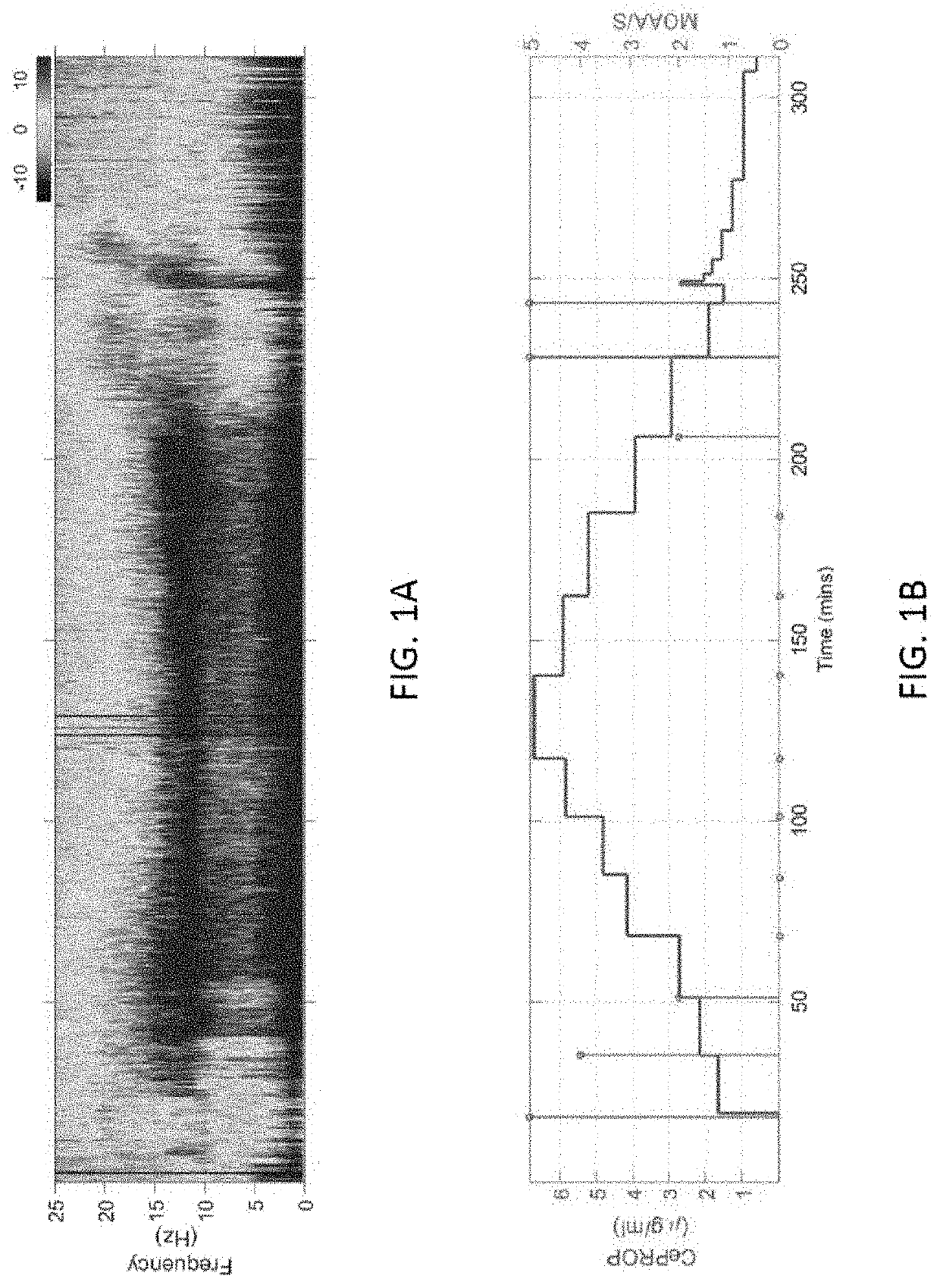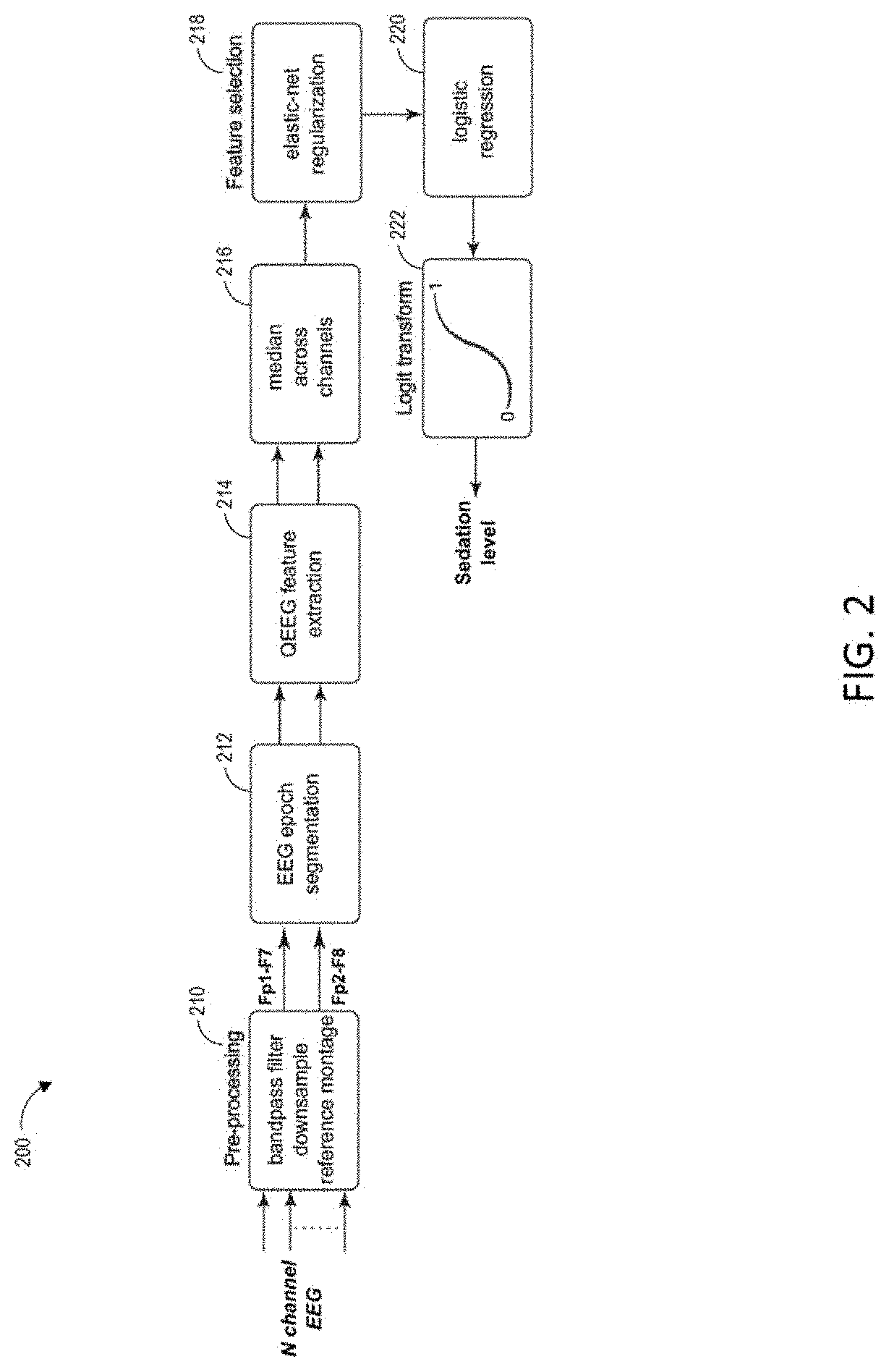Combining multiple qeeg features to estimate drug-independent sedation level using machine learning
a machine learning and sedation level technology, applied in the field of patient monitoring, can solve the problems of limited performance of sedation indicators based on single quantitative electroencephalogram (qeeg) feature as estimates of the sedation level of patients, and achieve the effect of improving the predictability of the level of sedation
- Summary
- Abstract
- Description
- Claims
- Application Information
AI Technical Summary
Benefits of technology
Problems solved by technology
Method used
Image
Examples
example distributions
[0072 of AUC values for individual features across three drugs are shown in FIG. 3. No single feature was able to efficiently differentiate between awake and sedated state for the three drugs illustrated in FIG. 3 (AUC>0.9). The relative entropy (RE) had the highest AUC for both propofol (AUC=0.87 (0.10)) and sevoflurane (AUC=0.71 (0.05)). For dexmedetomidine, singular value decomposition entropy outperformed other features (AUC=0.66 (0.05)).
[0073]2. Drug Dependent System
[0074]Example performance of the sedation level estimation system 200 using different feature domains is given in Table 2. As shown in Table 2, performance was significantly better (p<0.05) using combined QEEG features (time+frequency+entropy) when compared to other individual domain features. In some examples, the following performances were obtained for different training and testing combinations using QEEG features: PP—0.97 (0.03), SS—0.74 (0.25), DD—0.77 (0.10), SP—0.93 (0.06), DP=0.82 (0.11), PS=0.73 (0.23), DS...
PUM
 Login to View More
Login to View More Abstract
Description
Claims
Application Information
 Login to View More
Login to View More - R&D
- Intellectual Property
- Life Sciences
- Materials
- Tech Scout
- Unparalleled Data Quality
- Higher Quality Content
- 60% Fewer Hallucinations
Browse by: Latest US Patents, China's latest patents, Technical Efficacy Thesaurus, Application Domain, Technology Topic, Popular Technical Reports.
© 2025 PatSnap. All rights reserved.Legal|Privacy policy|Modern Slavery Act Transparency Statement|Sitemap|About US| Contact US: help@patsnap.com



